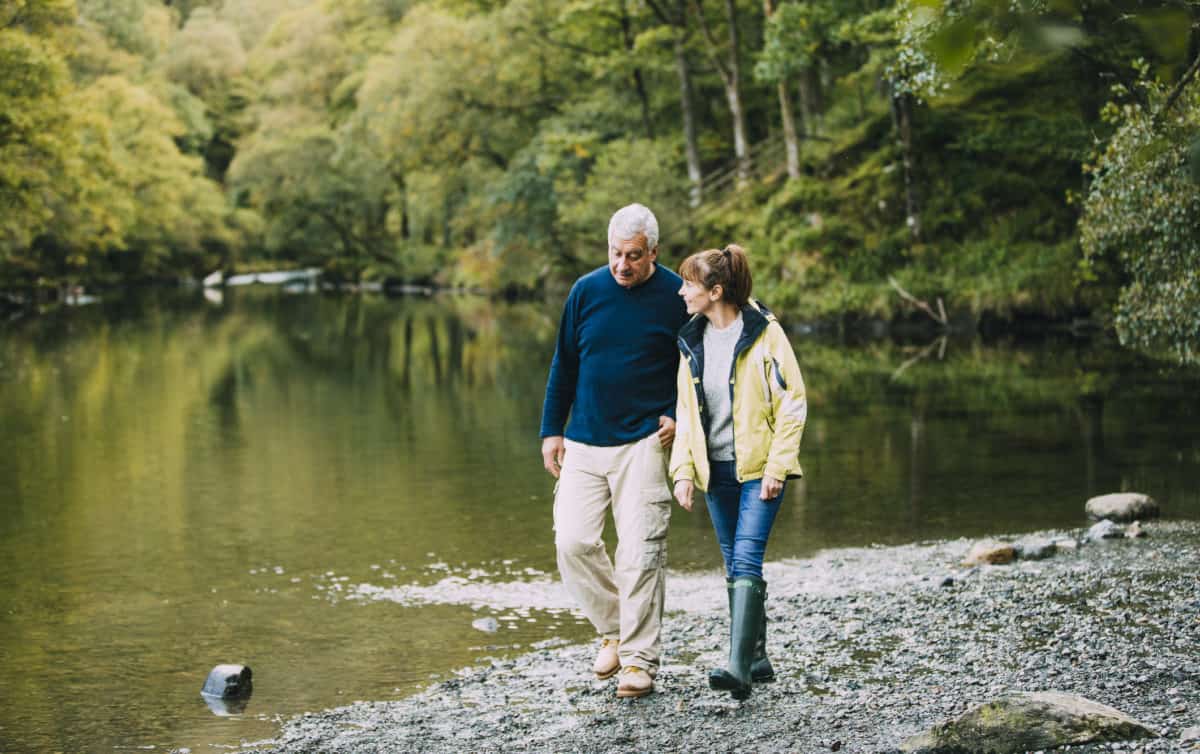“Move, move, move,” is one of the best things you can do to prevent stroke, according to Professor Amy Brodtmann, a leading stroke and cognitive neurologist, from The Florey Institute and a member of the Melbourne Academic Centre for Health (MACH) Care of the Ageing Network.
Prof Brodtmann explains that “heart health is brain health.” Meaning exercises that are good for your heart, such as running and brisk walking, are also good for your brain.
The Stroke Foundation Australia, estimates approximately 56,000 people in Australia will experience a stroke this year. Furthermore over 475,000 Australians are living with the effects of stroke. This is predicted to increase to one million by 2050.
The Brain Foundation identifies two ways in which stroke can occur:
The first way is by a blockage or clot. Blood flows to your brain, through major vessels called arteries. Arteries supply your brain with oxygen and nutrients. When the artery experiences a blockage, this causes blood, oxygen and nutrients, to stop flowing to that region of your brain, leading to a stroke.
The second way is through a haemorrhage or when a blood vessel bursts. When a blood vessel bursts in your brain, bleeding occurs in that area of the brain, depriving it of oxygen and nutrients.
Stroke can have a significant impact on your life, such as physical weakness on one side of your body; troubling coordinating body movements; emotional and mood impacts; and problems with memory. Stroke is also a major risk factor for dementia.
Latest research
Prof Brodtmann has a passion for unravelling the mysteries around stroke. This interest is fueled by her desire to help her patients and providing answers to their questions.
Current research by Prof Brodtmann and colleagues, aims to understand how exercise can protect your brain after a stroke. To date, research has focused on the first few hours after stroke. This research looks at what happens two months after a stroke occurs. After a stroke brain atrophy or shrinkage is common. Therefore participants in this study are given exercises over eight weeks, to see the impact of exercise on their brain health. This therapy intervention post-stroke is similar to cardiac rehabilitation after a heart attack. The study also aims to see how exercise can impact on general physical and psychosocial well-being after a stroke.
A second part to the research, funded through the Australian Government’s Medical Research Future Fund (MRFF) via the MACH, is collecting blood and stool (poo) samples, which are being stored in a biobank, the first of its kind for stroke.
Blood samples will be collected for analyses, specifically looking at the relationship between markers of inflammation in your blood, as well as genetic factors related to stroke.
Additionally, stool samples are being collected. Research that explores the link between gut health and brain health, particularly in relation to stroke, is growing. This current research aims to explore this hypothesis further.
The overall aim of the biobank is to collect samples from a wide range of individuals which can be used by research groups nationally and internationally. Through the pooling of resources and sharing of information there is greater power and ability to identify risk-factors that occur after a stroke and how this can impact on other factors such as memory and ultimately dementia.
Team-work helps get the job done!
Prof Brodtmann acknowledges that this research is a huge team effort with partnership happening across a wide range of disciplines. Her expertise lies in brains, neurology and imaging. Other team members provide experience in stroke, neurology, statistics, and behavioural neuroscience. This wide range of specialists helps to answer the many complex questions researchers still have about stroke, with the overall aim of improving patient outcomes.
Consumer thoughts
“As a person who saw his Father have many strokes and recently seeing a family friend suffer the same, it is amazing to see the change in treatment. Strokes will always be around and now people appear to have treatment that allows them to live a fairly normal life, unlike many years ago. This type of research is what is needed for people to recover.”
MACH Care of the Ageing, Consumer Representative Barry Baulch
Next steps
Like many, the COVID-19 pandemic has shifted how this research will be conducted. Prof Brodtmann and partners are thinking creatively and now plan to deliver their exercise classes online.
For more information about this research please visit this website.
And remember as Prof Brodtmann advocates, it is “never too late to start exercising.”

Prof Amy Brodtmann

